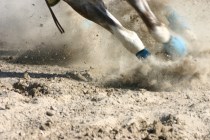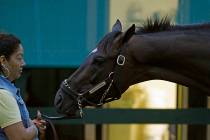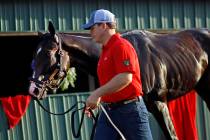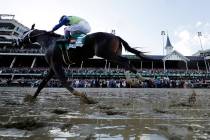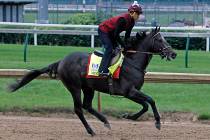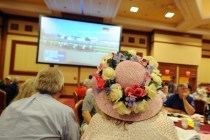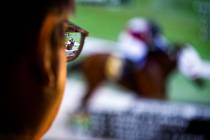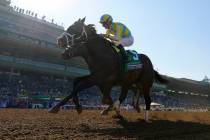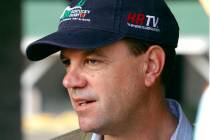Hugging rail dangerous but can pay dividends
The shortest, most efficient route to the finish line in a horse race is to hug the rail. Jockey Calvin Borel has used this tactic so often his nickname is Bo-rail. After watching him ride Street Sense to a win in the Kentucky Derby, you know why.
When I handicapped the Derby, I believed Street Sense's best races were when he raced on the rail. Despite that knowledge, and with a 20-horse field, I was open-mouthed watching Borel stick to the rail for 95 percent of the race. Street Sense, next to last early on, cruised by 16 horses on the inside and then in the stretch angled out to pass the final two, including runner-up Hard Spun.
Many jockeys avoid riding the rail at all costs. One reason is getting into trouble is easy while surrounded by other runners. If one horse had impeded Street Sense in the Derby, he probably would not have won. Another is nerves of steel are needed to ride inside. Being a jockey is dangerous enough; chances of getting injured increase when cramped inside.
A key point in the Derby was near the top of the stretch. Street Sense was zooming past horses inside when he came upon a potentially disastrous roadblock, Liquidity, who also was glued to the rail. At that moment, David Flores on Liquidity moved off the rail, which allowed a perfect path to victory for Borel.
Street Sense became the only horse capable of sweeping the Triple Crown. None has done so since Affirmed in 1978. Can Street Sense do it? Maybe.
Horses are flesh and blood. Just because Street Sense beat Hard Spun and favored Curlin senseless in the Derby doesn't mean they will run similar races in the Preakness. Trainer Carl Nafzger had Street Sense honed for a peak performance in the Derby. He could regress.
Hard Spun and Curlin ran well. Of the two, Curlin has a better chance of improving in the Preakness. Can they improve enough to spring an upset? Stay tuned.
Richard Eng's horse racing column is published Friday. He can be reached at rich_eng@hotmail.com.
RICHARD ENGMORE COLUMNS









